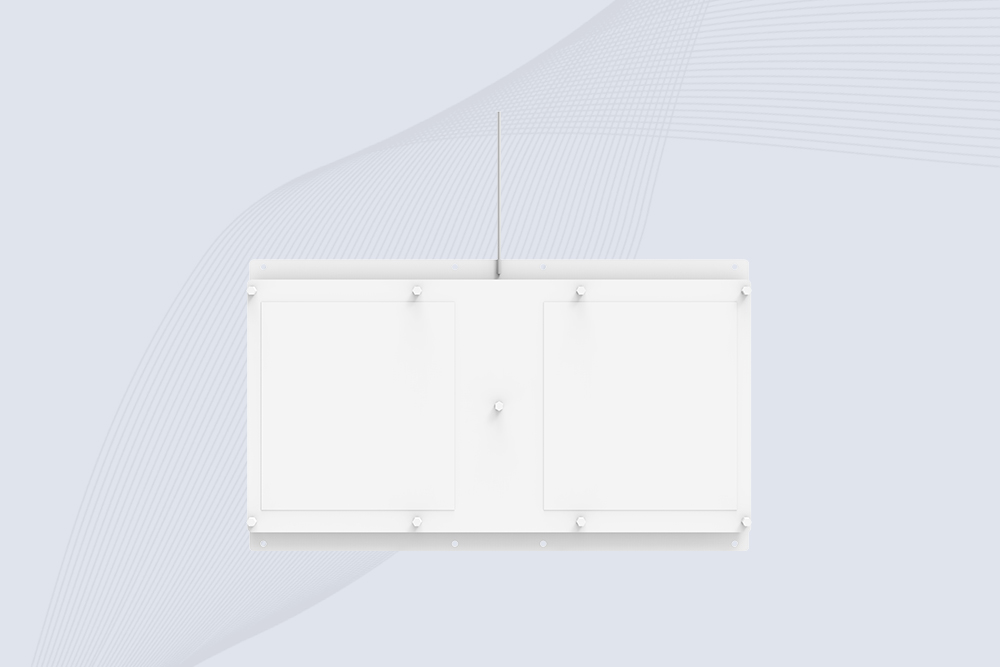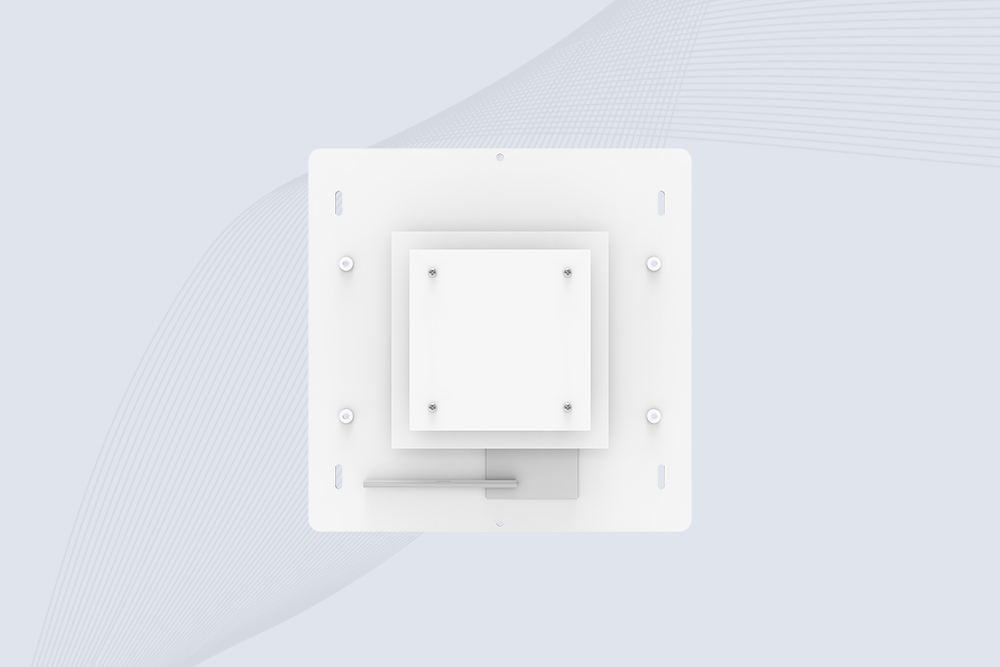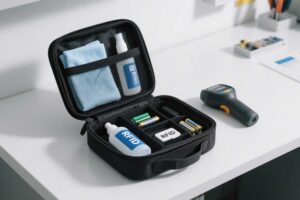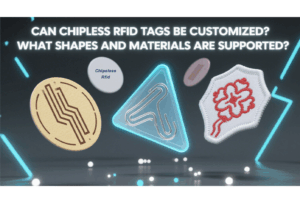Understanding What You’re Actually Designing
When people ask how to design a 125kHz antenna for a 1-meter RFID reader, they often picture a traditional antenna radiating energy like Wi-Fi or Bluetooth. But that’s not what’s happening here.
At 125kHz, you’re not dealing with radio waves in the far field — you’re playing in the magnetic near field, where energy transfer is all about magnetic coupling between coils. In simpler terms, your “antenna” is really a magnetic field generator, and the key to range is not in fancy impedance matching or gain—it’s in magnetic field strength, Q factor, and resonance tuning.
The Core Idea: Magnetic Coupling, Not Radio Transmission
A 125kHz RFID system works by creating a magnetic field that induces current in the tag’s tiny coil. The tag then modulates that field to send data back. To stretch that field to 1 meter, you’re fighting physics — and every detail matters: coil size, wire turns, capacitance, and even how your test bench is grounded.
So, your goal isn’t “make it radiate farther,” but rather “make the magnetic field denser and more stable” across your desired space.
Step 1: Start with the Basics — The Resonant Loop
Every 125kHz reader coil is an LC circuit — a loop of wire (inductance) and a capacitor (tuning). You tune it so the circuit resonates at 125kHz.
At resonance, the current circulating in the loop peaks dramatically, generating a much stronger magnetic field. That’s what helps you get distance. But here’s the catch:
- Too low Q (quality factor) → weak magnetic field
- Too high Q → unstable performance, narrow bandwidth, and sometimes the reader fails to demodulate return signals
You want to find that sweet spot where the field is strong, but the system can still read tags reliably.
Rule of thumb:
- Measure your inductance (L) with an LCR meter.
- Use the formula
C = 1 / ((2πf)² * L) to calculate your tuning capacitor.
- Then, fine-tune it experimentally with a frequency analyzer or oscilloscope until you hit 125kHz dead-on.
Step 2: Coil Geometry — Bigger Isn’t Always Better
The first instinct is to make the loop huge — maybe a meter-wide circle. It makes sense, right? Larger loop, more field coverage. But reality bites:
As your coil gets bigger, the field strength per amp drops, because the magnetic field spreads over a larger volume. Instead of one massive loop, many engineers use multi-coil arrays or tall rectangular “pillar” coils — think of them as vertical panels wrapping the area where people or objects pass through.
Each coil can be tuned and driven individually or multiplexed in sequence to cover the full 1-meter zone.
Pro tip: Measure your magnetic field uniformity, not just maximum range. A coil that reads at 1 meter dead center but fails at 60 cm off-axis is basically useless.
Step 3: Material and Build Details Matter
- Wire gauge: Thicker wire reduces DC resistance, improving Q. Enamel-coated copper magnet wire works best.
- Ferrite cores: Using ferrite can help focus your magnetic field, but it changes your inductance. Always re-measure and re-tune.
- Capacitors: Use high-voltage, low-loss capacitors — the voltage across them at resonance can easily exceed 100V, even if your driver runs on 12V.
Tip: For large coils, even mechanical layout affects resonance. Keep the windings evenly spaced, avoid sharp bends, and make sure your coil form is rigid.
Step 4: Power and Driver Circuit
If your reader’s driver can’t push enough current into the coil, you’ll never reach 1 meter — no matter how perfect your LC tuning is. Most small modules are designed for near-contact applications, so their output current is limited.
You may need a custom driver stage capable of handling higher currents safely, with proper impedance matching to your resonant coil. It’s the same concept as driving a speaker — if the amplifier is too weak, the coil just hums quietly instead of roaring.
Step 5: Testing and Fine-Tuning
Designing the coil is half the work — tuning it is the other half.
Use an oscilloscope to observe resonance, a frequency generator to sweep around 125kHz, and a test tag to find the best position and orientation. Measure voltage and current on the coil; watch for heat buildup.
If you’re aiming for 1 meter, test in real-world conditions — metal surfaces, cables, or nearby electronics can distort your magnetic field. The ideal lab setup often fails miserably once you mount the reader near a gate or machine frame.
Step 6: When to Stop Fighting Physics
It’s worth saying: 1 meter is an ambitious goal for 125kHz. LF systems are intentionally short-range to prevent cross-talk. If you truly need 1-meter coverage, sometimes the real solution isn’t to push more current — it’s to rethink geometry, use multi-coil zones, or explore hybrid systems (LF for identity, HF/UHF for distance).
You’re not “losing” to physics — you’re learning how to work with it.
Final Thoughts
Designing a 125kHz RFID antenna for 1-meter range isn’t a copy-paste project. It’s an iterative, hands-on dance between theory, experimentation, and real-world tuning. You’ll break a few capacitors, scorch some wire, and curse resonance more than once — and that’s exactly how every good RFID engineer starts.
Once you see your tag respond cleanly at 1 meter — after all the smoke and multimeter readings — you’ll realize this isn’t about just building a coil. It’s about understanding how invisible fields behave when you make them visible with science, persistence, and a bit of intuition.

2025-12-04
Cykeo CK-A11 UHF RFID reader antenna delivers 11dBi gain, 840-960MHz frequency range, and IP65 ruggedness for retail, logistics, and industrial RFID systems. Features low VSWR and easy installation.

2025-12-04
CYKEO Antenna RFID Reader delivers stable long-range UHF performance with a 10.5dBi directional design, built for warehouses, conveyor portals, and industrial RFID systems. This rfid reader antenna provides 20m+ read distance and rugged IP67 protection.

2025-12-04
Cykeo CK-PHF3 industrial HF RFID Antenna offers 24-point dynamic tracking, ISO 14443A/15693 protocols, metal-environment stability for archives/libraries/manufacturing.

2025-12-04
Cykeo CK-A5B industrial Linear RFID Antenna delivers 5dBi gain, ≤1.5:1 VSWR, and IP65 rugged design for warehouse, production line, and logistics UHF systems.
 Cykeo RFID IoT Solution Products R&D Manufacturer
Cykeo RFID IoT Solution Products R&D Manufacturer







